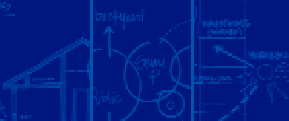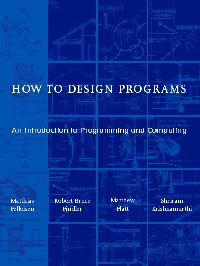On Sundays I resist dawdling before my morning trip to the coffee shop. I aim to get up & get out post-haste .. cuz sometimes the Orange County Rebels (bike group) make a pitstop there (like they did last Sunday) .. creating huge lines (and forever waits).
They take all the seats and are a noisy bunch (.. ~50 of them). I'm usually half-asleep until I've had my coffee, so the noise & commotion is, uh .. not good.
I've been studying programming recently. One of the first concepts any aspiring programmer learns is the » if-then conditional statement.
Conditional statements take the form: If a particular condition is met, then » do X .. otherwise » do Y.
 So I'm riding my bike this morning and approach the intersection at Flower street .. where I wonder, "Did I remember to put the DVD in my hip-pack?" .. cuz I need to return it to the library.
So I'm riding my bike this morning and approach the intersection at Flower street .. where I wonder, "Did I remember to put the DVD in my hip-pack?" .. cuz I need to return it to the library.
And all of a sudden .. without any effort on my part, this whole if-then conditional statement (beautifully formatted) pops into my conscious mind. Now I'm sure I've negotiated many similar if-then scenarios before .. but never so explicitly.
So I stop the bike at the Flower intersection and peek into my hip-pack. If I have the DVD with me, I'm gonna turn left onto Flower and » take Flower down to the library and drop off the DVD.
But the library sits on a main road (noisy, lotsa traffic). I'd rather take the back roads, which are far more scenic and quiet. So otherwise (then), I continue straight and » take the backroads.
I could've dropped off the DVD after coffee (nothing bothers me after coffee), but I wanted to stop at the grocery store afterwards, and pick up a few things. And the grocery store is the opposite direction (from the library). So I'd have to drop it off now.
Anyway, it surprised me to see how quickly & easily this technological concept had superimposed itself (unrequested, no less) over my conscious life. So sharp & clear. Pronounced & pervasive. I mean, I didn't really want this formal if-then statement to invade my thinking. I'd rather keep that aspect isolated to the Programming part of my life. But I couldn't.
At the coffee shop, I shared my experience with Kurt .. who is always sitting there, programming games on his laptop at the corner table. He's a programmer who specializes in generating 3D graphics for some small Gaming company that makes games for the Nintendo Wii. "You've just decribed the last 30 years of my life," he said.


 Where Programming languages are concerned, expressiveness might be the ability to DO a lot with a little.
Where Programming languages are concerned, expressiveness might be the ability to DO a lot with a little.



